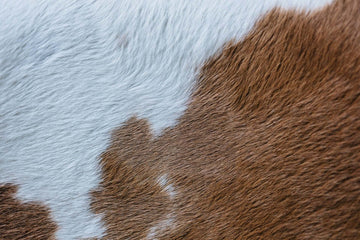As concerns over traditional leather production continue to rise, the demand for sustainable and cruelty-free alternatives has surged. Vegan leather has emerged as a viable solution, offering a plethora of benefits without compromising on quality or style. Join us as we explore the state of the vegan leather industry, uncovering the statistics that highlight its positive impact on the world and the fashion industry. Let's dive in and discover the exciting developments shaping the future of vegan leather!
A Brief Overview of the Modern Leather Industry
Leather has long been a popular material for various industries, including fashion, accessories, and furniture. However, the traditional leather industry has faced scrutiny due to its environmental impact and ethical concerns associated with animal cruelty. As a result, the demand for alternatives has grown, leading to the rise of the vegan leather industry.
What is Vegan Leather?
Vegan leather, also known as faux leather or synthetic leather, is a material that imitates the look and feel of traditional animal-based leather. It is typically made from a variety of plant-based materials such as pineapple leaves, cork, apple peels, and even mushrooms. Synthetic alternatives like polyurethane (PU) and polyvinyl chloride (PVC) are also commonly used to create vegan leather.
Quality and Durability of Vegan Leather
One common misconception about vegan leather is that it lacks the quality and durability of genuine leather. However, technological advancements have allowed manufacturers to produce high-quality vegan leather products that are often indistinguishable from their animal-based counterparts.
Today, vegan leather is available in a wide range of textures, colors, and finishes, offering consumers a versatile and sustainable choice.
Environmental Benefits of Vegan Leather
One of the significant advantages of vegan leather lies in its positive environmental impact. Traditional leather production requires extensive amounts of resources, including water, energy, and chemicals. According to one 2014 study, the processing of leather from start to finish produced 73 kgCO2e/m2 (roughly 73 kilograms of carbon dioxide per square meter of finished leather). In contrast, the production of vegan leather involves fewer resources and generates lower greenhouse gas emissions, at just 15.8kg of CO2e/m2 (per this 2017 report for the UN).
Furthermore, the use of plant-based materials in vegan leather reduces the dependency on fossil fuels. For instance, pineapple-based leather, known as Piñatex, utilizes waste pineapple leaves, thereby creating an additional revenue stream for farmers and reducing agricultural waste.

Ethical Considerations for Vegan Leather
In addition to the environmental benefits, vegan leather also addresses the ethical concerns associated with animal cruelty in the traditional leather industry. By opting for vegan leather, individuals can support animal welfare and promote a more compassionate fashion industry. The production of vegan leather avoids the need for animal slaughter and the use of animal by-products, aligning with the growing demand for cruelty-free products.
Growth and Popularity of Vegan Leather
The vegan leather industry has experienced significant growth and popularity in recent years. According to data from Grand View Research, the global vegan leather market was valued at $36.24 billion in 2022 and is projected to reach almost double this by 2028, with a compound annual growth rate (CAGR) of 7.8% during the forecast period.
This exponential growth can be attributed to several factors. Firstly, the increasing awareness of environmental issues and the desire for sustainable lifestyles have fueled the demand for vegan alternatives. Secondly, consumers, especially millennials and Gen Z, are actively seeking ethical and cruelty-free options, leading them to embrace vegan leather as a conscious choice. Finally, the fashion industry itself has started recognizing the potential of vegan leather, with many renowned brands incorporating it into their collections.

Innovations in Vegan Leather
The vegan leather industry has witnessed remarkable innovations in recent years. Researchers and companies have been exploring new materials and manufacturing techniques to further improve the quality, durability, and sustainability of vegan leather.
One noteworthy innovation is the development of lab-grown leather, also known as cultured leather or biofabricated leather. This process involves creating leather-like materials using cells derived from animal tissues, eliminating the need for animal slaughter. While still in the early stages, lab-grown leather holds great promise for the future, offering a sustainable alternative without compromising on quality or aesthetics.
Future Prospects and Conclusion
The vegan leather industry is poised for continued growth and innovation. As consumers become more conscious of the environmental and ethical impact of their choices, the demand for vegan alternatives will likely soar. The fashion industry, in particular, has a crucial role to play in driving this change by embracing sustainable materials like vegan leather.
By breaking down the data, it becomes evident that vegan leather offers numerous benefits, including reduced environmental impact, improved animal welfare, and high-quality products. As the industry evolves, we can expect even more exciting advancements and a wider range of options for consumers seeking fashionable and sustainable alternatives.
At Doshi, we are committed to providing stylish and ethical accessories made from vegan leather. Join us in supporting the growth of the vegan leather industry and making a positive impact on our planet and the fashion industry as a whole. Together, we can shape a more sustainable and compassionate future.
Sources:
- Grand View Research (2021). Synthetic Leather Market Size, Share & Trends Analysis Report By Type (PU, PVC, Bio-based), By Application (Footwear, Clothing, Furnishing, Automotive, Wallets, Bags & Purses), By Region, And Segment Forecasts, 2022 - 2030.
- Kuo-Wen Chen, Lung-Chieh Lin, Wen-Shing Lee (2014). Analyzing the Carbon Footprint of the Finished Bovine Leather: A Case Study of Aniline Leather.
- United Nations Industrial Development Organization (2017). Leather Carbon Footprint Review of the European Standard EN 16887: 2017.










